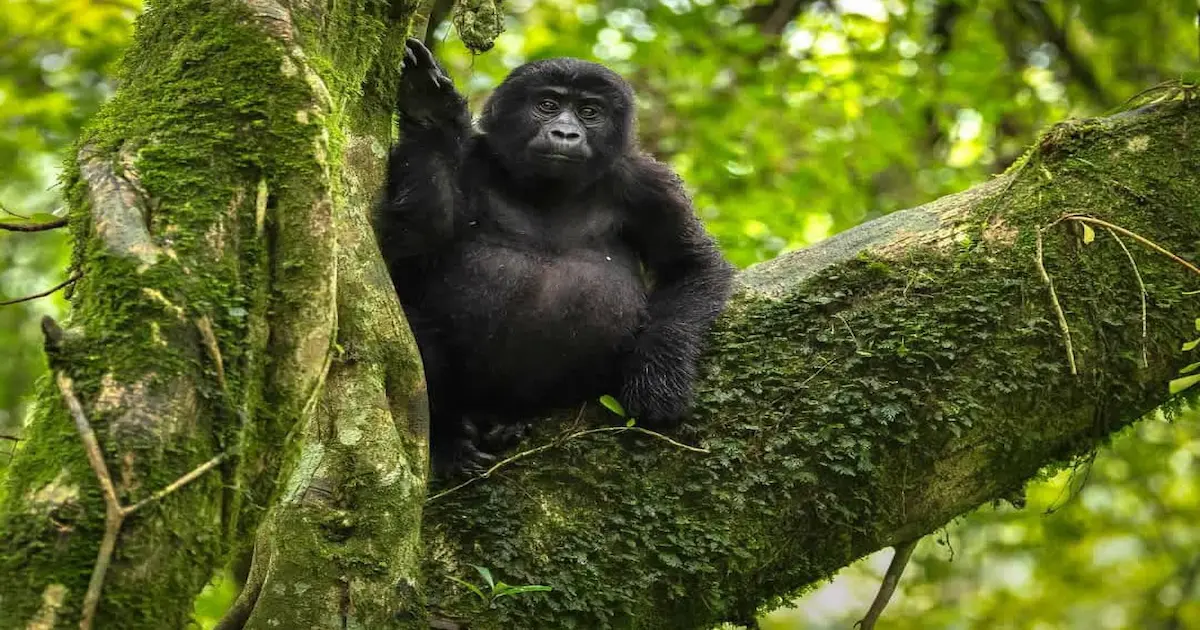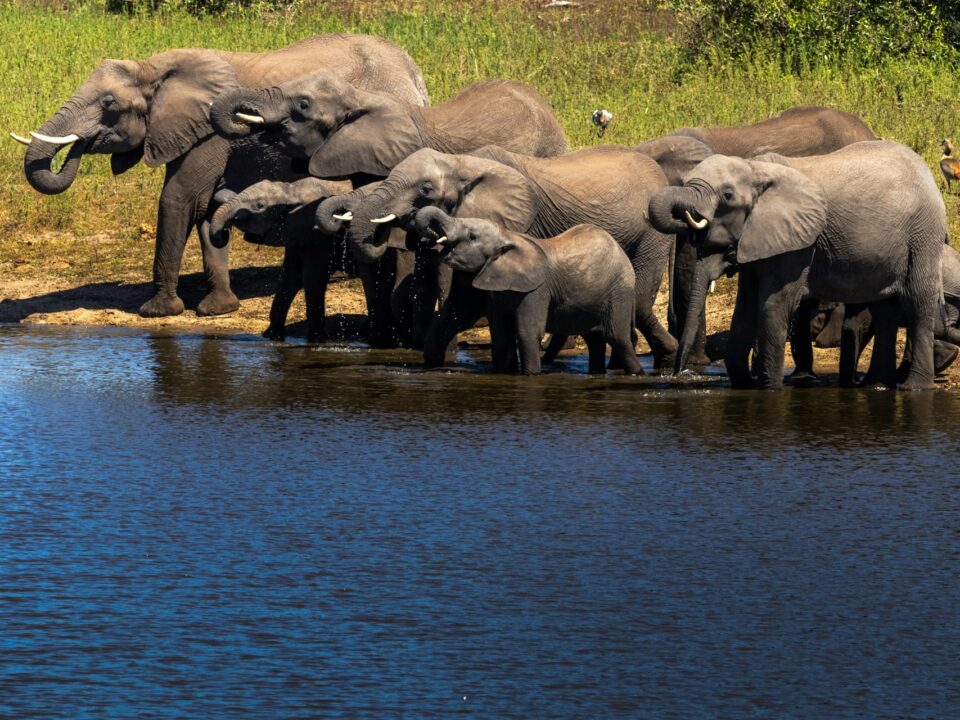Thinking about coming face-to-face with majestic mountain gorillas? It’s an unforgettable wildlife encounter that tops many bucket lists. For tourists from around the world, the primary destinations for this experience are Uganda and Rwanda.
While both countries offer an incredible opportunity to see these endangered primates in their natural habitat, the experience, cost, and overall atmosphere can be quite different. To help you plan your perfect trip, we’ve put together a comprehensive comparison of gorilla trekking in Uganda and Rwanda.

Gorilla Trekking Cost Factor: A Tale of Two Budgets
The most significant difference between the two destinations is the cost of the trekking permit itself. This single factor often determines a traveler’s choice.
- Uganda: A gorilla trekking permit costs $800 per person. For those seeking an even more immersive experience, the Gorilla Habituation Experience permit is $1,500 as per UWA(Uganda Wildlife Authority). and allows you to spend up to four hours with a family. Uganda’s lower permit fee makes it the more accessible and budget-friendly option for many.
- Rwanda: A gorilla permit in Rwanda costs a standard $1,500 per person. Rwanda has positioned itself as a high-end luxury destination, and this pricing strategy reflects that. While there are sometimes seasonal discounts, the price is generally fixed.
Our Take: If you’re traveling on a tight budget or want to save money to spend on other safaris or tours, Uganda offers an equally thrilling experience for a much lower price.
The Trekking Experience: Wild Adventure vs. Predictable Hike
The physical experience of the trek itself also varies between the two countries, primarily due to the unique ecosystems of their respective national parks.
- Uganda: Home to Bwindi Impenetrable National Park, Uganda offers a more rugged and authentic jungle adventure. The name “Impenetrable” says it all—this is a dense, wild rainforest with steep hills and thick vegetation. Treks can last from a few hours to a full day, depending on the gorilla family’s location. This is for the traveler who wants a true challenge and the feeling of being a genuine explorer.
- Rwanda: Trekking takes place in the Volcanoes National Park, which is part of the Virunga mountain chain. The vegetation here, primarily bamboo forest, is generally less dense than in Bwindi. This often results in a more predictable and shorter hike. The visibility of the gorillas can also be clearer, making it an ideal choice for those who want a less strenuous trek.
Accessibility & Logistics: Convenience vs. Diversity
Both countries are easily accessible by air, but the travel time to the parks is a key consideration.
- Uganda: The drive from Entebbe International Airport to Bwindi Impenetrable National Park can take up to 8 hours. Many travelers choose to fly into Rwanda’s Kigali International Airport and then take a shorter 3-4 hour cross-border drive to the southern sector of Bwindi.
- Rwanda: From Kigali International Airport, the drive to Volcanoes National Park is a comfortable 2-3 hours on well-maintained roads. This convenience makes it a popular choice for those on a tight schedule.
Our Take: While Rwanda offers superior convenience, Uganda offers greater tourism diversity. You can combine your gorilla trek with a classic Big Five safari in parks like Queen Elizabeth or Murchison Falls, or go chimpanzee trekking in Kibale National Park.
Summary Table: Uganda vs. Rwanda Gorilla trekking
| Feature | Uganda | Rwanda |
| Permit Cost | $800 | $1,500 |
| Trekking Difficulty | More strenuous, rugged jungle but rewarding | Less strenuous, often shorter |
| Overall Vibe | Authentic, wild, diverse | Luxury, premium, convenient |
| Other Activities | Big Five safaris, chimpanzee trekking, and more | Golden monkey trekking, cultural visits |
| Best For | Budget-conscious travelers, adventurers, wildlife enthusiasts | Luxury travelers, those with limited time |
Ultimately, the choice between Uganda and Rwanda depends on your budget and what kind of experience you’re looking for.
- Choose Uganda if you want the most affordable permit, a wide variety of other safari and wildlife experiences, and a more rugged, authentic trekking adventure.
- Choose Rwanda if you prioritize a short travel time from the airport, a more luxurious experience, and a less physically demanding trek.
No matter which destination you choose, the privilege of observing these incredible animals is a once-in-a-lifetime experience.
To start planning your gorilla safari, contact tour experts of Kuzora Safari Tours today! We can help you arrange permits, accommodation, and a complete itinerary that meets all of your travel goals.
Frequently Asked Questions (FAQs)
Q1: Which is cheaper for gorilla trekking, Uganda or Rwanda? A: Uganda is the more affordable option. A gorilla trekking permit in Uganda costs $800, while a permit in Rwanda costs $1,500. This makes Uganda a great choice for budget-conscious travelers.
Q2: Is the gorilla trekking experience different in Uganda versus Rwanda? A: Yes. In Uganda’s Bwindi Impenetrable National Park, the trek is a more rugged, wild, and unpredictable jungle hike. In Rwanda’s Volcanoes National Park, the trek is generally shorter and easier, as the habitat is less dense.
Q3: Which country is easier to get to for gorilla trekking? A: Rwanda offers superior convenience. Volcanoes National Park is a short 2-3 hour drive from Kigali International Airport. Accessing Uganda’s trekking parks from Entebbe International Airport can take 8 hours, although a popular option is to fly into Kigali and drive across the border for a shorter journey.
Q4: Is one country “better” than the other for gorilla trekking? A: Neither is inherently better; they are simply different. Uganda is ideal for travelers who want a more adventurous and affordable trek, or who wish to combine their experience with a Big Five safari. Rwanda is perfect for those who prioritize convenience, luxury, and a less physically demanding hike.
Q5: Is gorilla trekking safe? A: Yes, gorilla trekking is very safe. You will be accompanied by a team of experienced guides, trackers, and armed rangers who are highly trained to ensure your safety and the well-being of the gorillas. The gorillas you visit are habituated, meaning they are accustomed to human presence.
Q6: What is the best time of year for gorilla trekking? A: Gorilla trekking is a year-round activity, but the best time is during the drier seasons: from June to September and December to February. During these months, the trails are less muddy, and hiking is generally easier.
Q7: How fit do I need to be for the trek? A: While you don’t need to be a marathon runner, a reasonable level of physical fitness is required. The treks can be physically demanding, involving hiking through steep, uneven, and sometimes muddy terrain for several hours. Porters are available to hire to help carry your gear.
Q8: What should I pack for a gorilla trek? A: You should pack sturdy, waterproof hiking boots, long-sleeved shirts and trousers to protect against insects and scratches, a lightweight rain jacket, a hat, and gardening gloves to protect your hands. Insect repellent and a small daypack are also essential.
Q9: What are the health and safety regulations for tourists? A: To protect the gorillas, visitors must be in good health and free from any contagious illnesses, such as a cold or flu. You will be required to wear a face mask when in the presence of the gorillas to prevent the transmission of germs. A distance of at least 7 meters (23 feet) must be maintained from the gorillas at all times.
Q10: How far in advance do I need to book my permit? A: It is highly recommended to book your gorilla permit at least 6 to 12 months in advance, especially if you plan to travel during the peak dry seasons. Permits are limited and sell out quickly.


